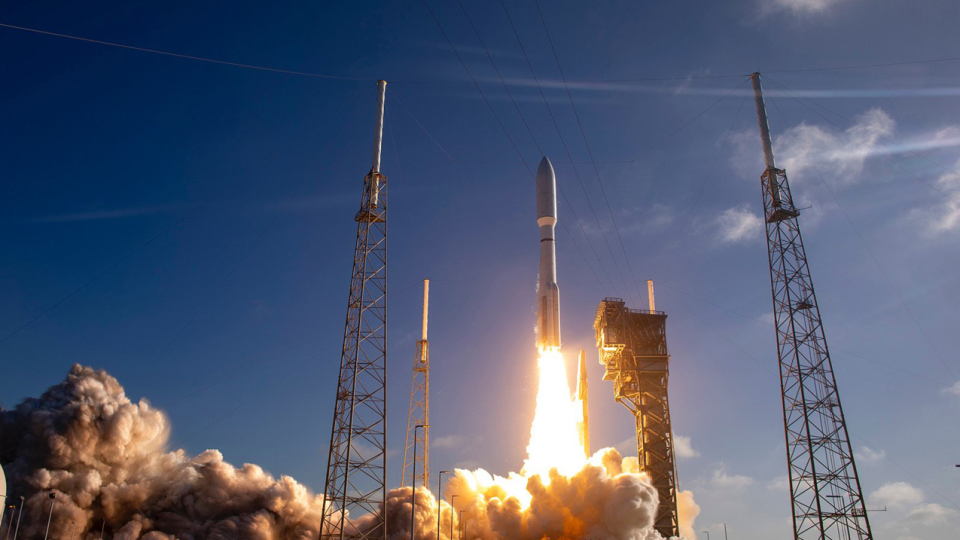Publié le 3 mars 2022
NOAA’s GOES-T, the third in a series of four advanced geostationary weather satellites, blasted into orbit aboard a United Launch Alliance Atlas V 541 rocket at 4:38 p.m. ET today from Cape Canaveral, Florida. GOES-T’s mission managers confirmed that its solar arrays successfully deployed at 8:28 p.m. EST, and the satellite was operating on its own power.
GOES-T will track destructive wildfires, lightning, Pacific Ocean-based storms, dense fog, and other hazards that threaten the U.S. West Coast, Hawaii and Alaska. It will also monitor solar activity and space weather to provide early warnings of disruptions to power grids, communications and navigation systems.

Liftoff of NOAA's GOES-T satellite from Cape Canaveral, Florida, on March 1, 2022. (United Launch Alliance)
“GOES-T joins the suite of advanced technology providing critical data and imagery to forecasters and researchers tracking hazardous weather and working toward building a climate ready nation,” said NOAA Administrator Rick Spinrad, Ph.D.
Once GOES-T is positioned in a geostationary orbit 22,300 miles above the Earth, after approximately two weeks, it will be renamed GOES-18. After undergoing a full checkout and validating its six high-tech instruments, the new satellite will move to the GOES-West position and replace GOES-17 in early 2023.
From there, it will constantly provide advanced imagery and atmospheric measurements. Observations from GOES-18 will be fed into the NOAA's National Weather Service’s computer models used by meteorologists to develop forecasts and help predict the formation, growth, intensity and movement of hazardous weather systems.